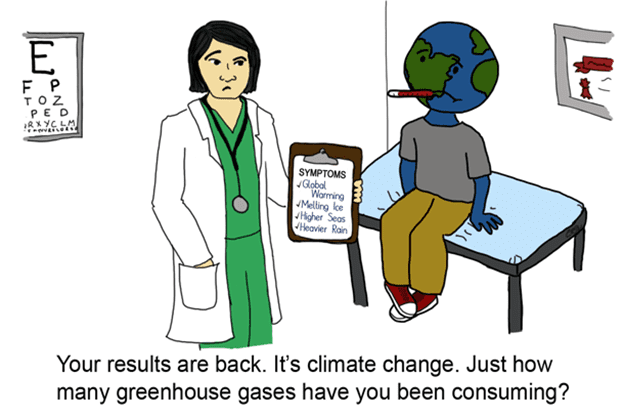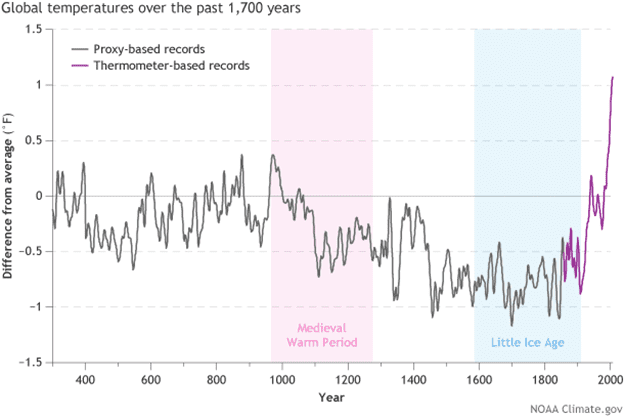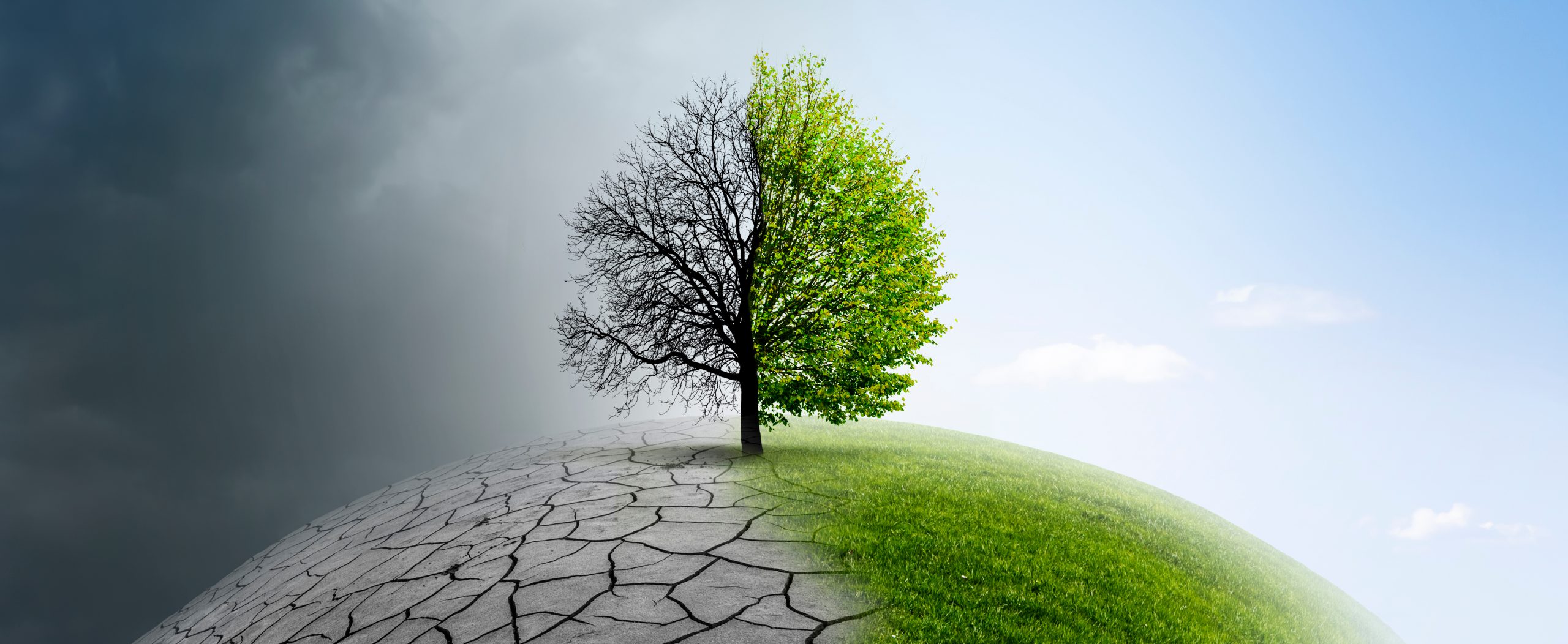Chances are, if you’re reading this, you’re interested in doing something about climate change. But to move from interest to commitment, you should be clear about what you’re talking about and what’s at stake. Keeping that in mind, here’s a brief introduction to the issue of climate change:
First, the definitions
To make sure we’re all on the same page, let’s start with definitions. Here are some words and terms you’ve undoubtedly heard but might be hard-pressed to define:
- Weather: Atmospheric conditions that occur locally over short periods, typically within minutes to months. (People who discount climate change often base their opinions on brief weather anecdotes rather than long-term measurements.) According to NASA, rain, snow, floods, or thunderstorms fall in this category.
- Climate: The long-term regional or global average of temperature, humidity, and rainfall patterns over seasons, years, or decades.
- Climate change: Long-term shifts in temperatures and weather patterns. According to the United Nations, “…these shifts may be natural, such as through variations in the solar cycle. But since the 1800s, human activities have been the main driver of climate change.” These changes bring about a wide range of effects. Michael Regan, the US Environmental Protection Agency administrator, lists effects of climate change in every corner of the US: “[W]ildfires out West, back-to-back hurricanes in the Gulf Coast, extreme heat and rain in the Heartland, and historic flooding in the East.”
- Global warming: The long-term heating of Earth’s climate system due to human activities. Global warming is usually measured as the average increase in Earth’s global surface temperature. Although “global warming” is often used synonymously with “climate change,” climate change includes the side effects of warming, including melting glaciers and more frequent droughts.
- Greenhouse gases: Gases that trap the sun’s heat in the atmosphere. The main villain in this tale is carbon dioxide (CO2). This bad boy is released from the burning of fossil fuels and lingers in the atmosphere for 300-1,000 years. The primary converters of CO2 to oxygen are coral reefs. Decimated by fleets of massive ocean-floor-dragging trawlers, coral reefs can’t regenerate due to ocean acidification. The most significant greenhouse gas by volume is water vapor. Although water vapor seems innocuous, when atmospheric temps increase, so does humidity (the amount of water vapor). In a vicious cycle, high humidity leads to even higher temperatures. As a survivor of Hurricane Harvey, which dumped more than three feet of rain on Houston over an excruciating four days, I’ve seen the devastating effects of elevated ocean temperatures feeding ever-higher humidity.
Global warming is just one symptom of the much larger problem of climate change. NOAA Climate.gov cartoon by Emily Greenhalgh.

[Cartoon credit: https://www.climate.gov/news-features/climate-qa/whats-difference-between-global-warming-and-climate-change]
But we’ve always had climate fluctuations. What’s the big deal about this one?
Earth has indeed warmed and cooled over eons. However, temperature data from the past 200 years show an alarming, off-the-charts increase of 1.1º C since the 1800s. Take a look at this chart:

Temperatures over the past 2000 years compared to the 1961-1990 average, based on proxy data (tree rings, ice cores, corals) and modern temperature data. Over the past two millennia, the climate has warmed and cooled, but no previous warming episodes appear to have been as large and sudden as recent global warming. NOAA Climate.gov graph by Fiona Martin, adapted from Figure 34.5 in the National Climate Assessment, based on data from Mann et al., 2008.
Despite a brief pause when Covid lockdowns brought manufacturing to a standstill, global emissions, and thus global temperatures, have continued to climb. The decade of 2011-2020 was the warmest ever recorded. And the situation isn’t getting any better. According to NOAA’s 2020 Annual Climate Report, the combined land and ocean temperature rate increase per decade (0.18°C / 0.32°F) has doubled since the 1880s.
This unprecedented warming is terrible news because Earth is an interconnected system. Changes in one area can cause unexpected changes elsewhere. For instance, melting polar ice caps cause sea levels to rise, wiping out coastal communities.
So what can you do about climate change?
Although the statistics can be disheartening, collectively we can move the needle to help heal our planet. Here are three things you can do:
- Decrease your production of CO2 by reducing your fossil fuel usage.
- Work to ban the coral-reef-destroying commercial fishing practice of bottom trawling.
- Contribute to WellPlanet Project’s CO2 capture and sequestration initiative to mitigate climate change and ocean acidification. Encourage others to contribute to WPP, too. As you help spread the word, you’ll earn entries into drawings for one of 20 Teslas, which will help the lucky winners reduce their fossil fuel emissions. Stay tuned for more details!
Conclusion
Hopefully, you’ve gleaned a few nuggets about climate change from this blog post. When we all work together, we can accomplish far more than we can individually! Continue learning about climate change and move from interest to action.

